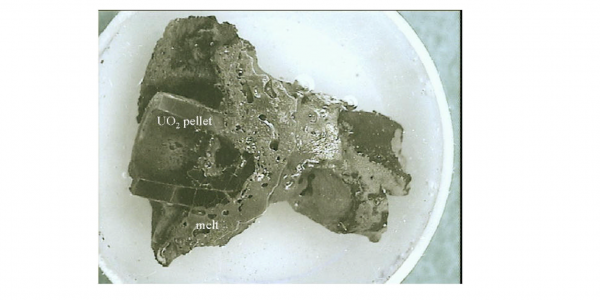
Short fuel rod experiments were carried out in the framework of the EU 5FWP COLOSS Project. The simultaneous dissolution of UO2 pellets and ZrO2 by molten Zr was investigated with PWR and VVER samples.
The high temperature interaction of reactor core materials during a severe accident leads to the oxidation and melting of metal components. The interactions of molten Zr cladding with uranium-dioxide and zirconium-dioxide are important factors in the determination of fuel failure conditions and play a role in the loss of fuel rod like geometry and in the formation of debris bed and molten pool in the core.
The dissolution of uranium-dioxide and zirconium-dioxide by molten Zircaloy were investigated in earlier separate effect tests. UO2 dissolution experiments were carried out with UO2 crucible and Zr charge. The simultaneous UO2-ZrO2 molten Zircaloy dissolution was investigated in UO2 crucibles with Zircaloy charge and ZrO2 central rod [1]. The analysis of different experiments showed some discrepancy between the results, which was connected with different crucible sizes, UO2/Zr mass ratios and the melt surface to volume ratios [2]. The comparison of simultaneous dissolution tests of UO2/ZrO2 and separate UO2 and ZrO2 showed faster dissolution and larger extent of dissolution in the case of simultaneous tests. These observations emphasized the importance of prototypic conditions on the dissolution process. For these reasons experiments with short fuel rod segments were carried out in the KFKI Atomic Energy Research Institute, Budapest. The development of dissolution models needs more prototypical experiments, this task was addressed in the COLOSS project of the 5th FWP. The analytical support of the AEKI short fuel rod dissolution tests was provided by COLOSS partners [3],[4]. The results of the experimental series are expected to make possible the further model development and code validation. 2. OBJECTIVES
